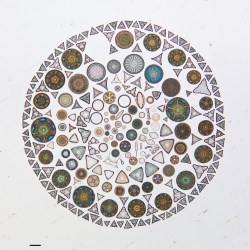
Thiophene_GuyCity fruit trees don’t hurt the environment.
Environmentalists have been friend-zoned. Every politician likes them, but no one loves them. No one wants to commit to a relationship. In large part that’s because environmentalists themselves haven’t been willing to commit: The environmental movement hasn’t decided what it really wants. We’re confused. We don’t know whether to make a case for nature as a pure abstraction or for nature as a source of good for human beings. And if we’re confused, how can we expect to persuade the world?
This confusion was on display last weekend in “Greedy Gardeners,” Mariellé Anzelone’s attack on urban gardens from the opinion pages of The New York Times. The essay was doubly disappointing because she came so close to getting the argument exactly right.
Anzelone opens with the accusation that urban farmers and guerrilla grafters (people who add fruiting branches to city trees) have gone too far — they’re greedy and bad for biodiversity. That’s a good hook: Counterintuitive claims, like “gardeners are bad for the environment,” grab people’s attention. The problem, she writes, is that “By so narrowly defining useful landscapes, the craze to farmify our surroundings has made it all about humans.” Instead, she argues, we should acknowledge that there are other critters out there, like the spicebrush swallowtail caterpillar, which are useful to humans, but can’t survive on cultivated fruit trees.
OK, sure. But in reality, the fruit-tree grafts aren’t going to hurt a single swallowtail, caterpillar, or butterfly — and they’ll help other pollinators. Let’s just get that out of the way. And “farmifying” tar paper rooftops can only enrich biodiversity. If Anzelone wants to pick a fight, little urban gardeners are the wrong opponents; there are real foes on the other side of this argument. Ultimately the gardeners are no more than a symbol (an unfair one) she uses to introduce a meaty philosophical question.
The question itself, however, is worthy of serious consideration: Should we be shaping the earth to our own selfish desires, or for the benefit of all living things?
There is a simple answer to this question, and if you’ll bear with me, I think I can stake out a perfect position to cut through the confusion, end the bickering, turn the environmental movement into a powerhouse for political change, and, ahem, save the world (or at least the version of the world that we love). Should take five minutes or so. Ready?
The answer is clear: We should selfishly applaud the gardeners. Ultimately, doing so will end up helping swallowtails, too.
What’s the case for selfishness? Well, we can’t escape it. Even when we think we are making purely altruistic choices, it’s actually human self-interest that’s guiding us. We protect rhinos because we humans would feel their loss (while the diatoms could care less). If we truly freed ourselves from our anthropocentrism we’d be campaigning to free smallpox, and crying over the extinction of a slime mold. George Carlin had it right: Instead of pretending to be saving the planet, we should embrace our self-interest. Environmentalism is really a movement to make the earth a better place for humans to thrive.

California Academy of SciencesDiatoms: beautiful and heartless.
Anzelone implies that she agrees. She makes a (selfish) utilitarian argument for conservation: The reason we should preserve the swallowtails is to preserve the ecosystem services they provide to us. But, as the renowned zoologist Robert May pointed out [PDF], there’s a huge problem with the utilitarian argument. We can survive even without swallowtails, without any pollinators actually, and without a large portion of the species alive today. As May put it, “I fear that we may be clever enough to create a world that is grievously biologically impoverished, but nevertheless sustainable — the hateful world of the cult movie Bladerunner.”
The utilitarian argument is too narrow. There are other ways that butterflies enrich our lives besides pollinating our food, ways that are harder to quantify but still wonderfully important. After all, man (or woman) cannot live on ecosystem services alone. Here’s where it gets tricky: Once you accept that we should manage the environment to improve the human good, a second, more difficult question immediately arises: How broadly do you define human thriving?

The utilitarian future.
This is where the real debate happens. On one side you have those who want to engineer the earth for the human good, where good is narrowly defined. These strict utilitarians say we need more vast, ugly industrial farms, and more clear-cut plantation forestry, so that we can increase our material wealth and spill it upon the poor. On the other side you have those (like me, and guerrilla grafters, I’d bet) who define human good very broadly: We want to have a vibrant world full of living things because that makes us feel good. We want to have a place for wilderness because there is something deep within humans that responds to wilderness. We want a world that allows for awe, and delight, and the sublime.
People concerned with sustainability can be divided into these three groups: You have catastrophists, who think humans are simply a cancer; you have cold-hearted utilitarians who want to sacrifice nature for industrial efficiency; and then you have this third group — perhaps we should be called “humble tinkerers,” or just “utilitarians with feelings.” Unlike the unfeeling utilitarians, we are humble about the march of progress and recognize that sometimes we need to step backwards, to abandon select technologies. And unlike the catastrophists, we think that human tinkering can improve the environment — we embrace innovation and science. We frankly put human needs first, but include in those human needs the unquantifiable things — like happiness and beauty — that make life worth living.

Just chaos A spicebrush swallowtail.
I’m hardly the first person to say all this, but it bears repeating as long as the environmental choice is portrayed as one between human greed and nature. For a humble tinkerer, fruit for the poor comes first — but we also want butterflies (both as pollinators and as things of beauty).
It seems likely that we could find room on all that rooftop tar paper for some sassafras for the swallowtails. We’d certainly have room for Anzelone too. She may not know it yet, but I suspect she’s actually one of us.



